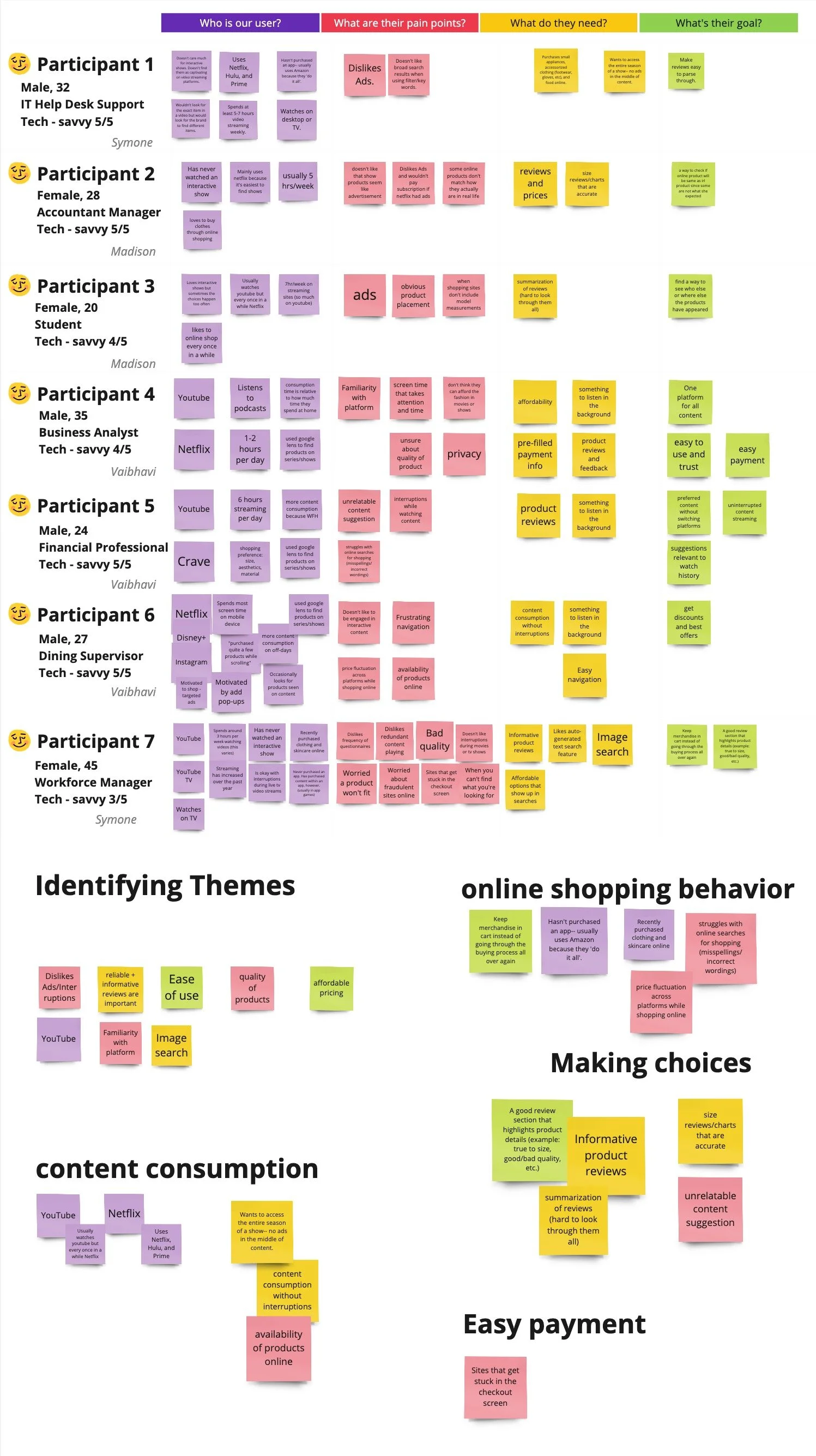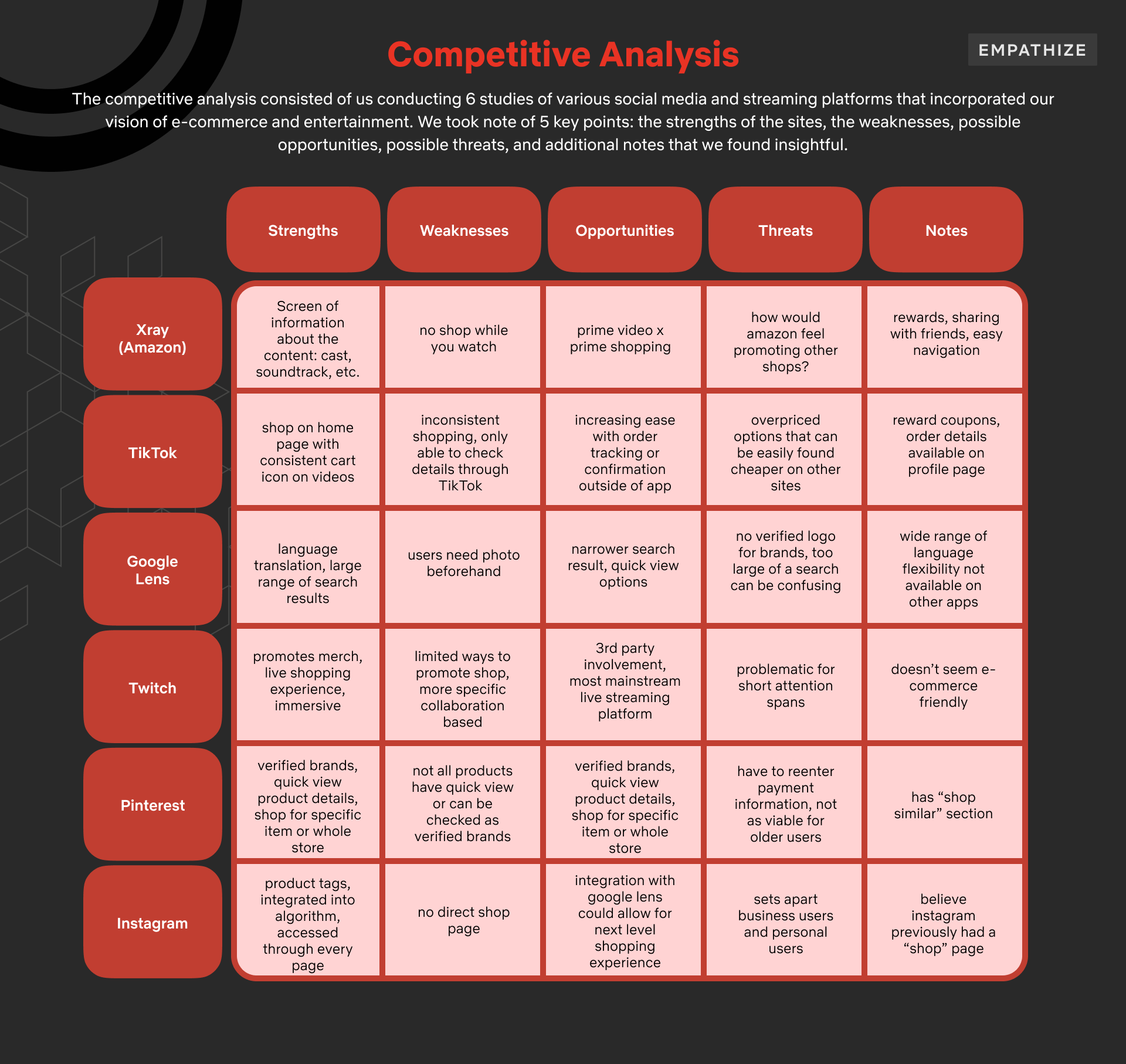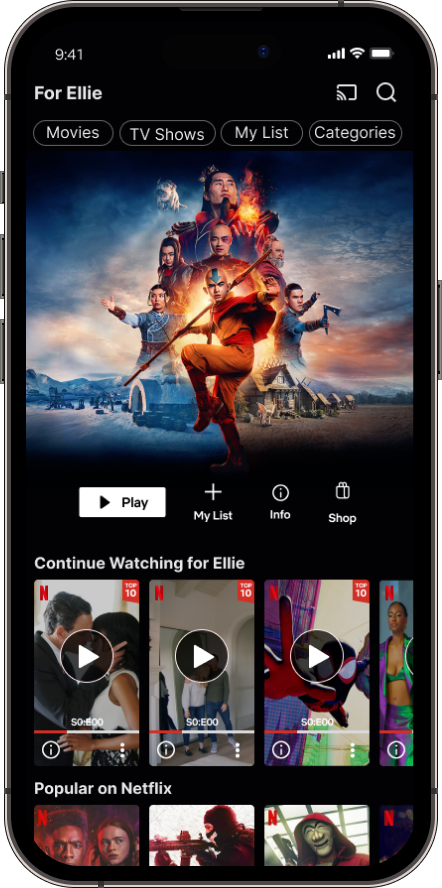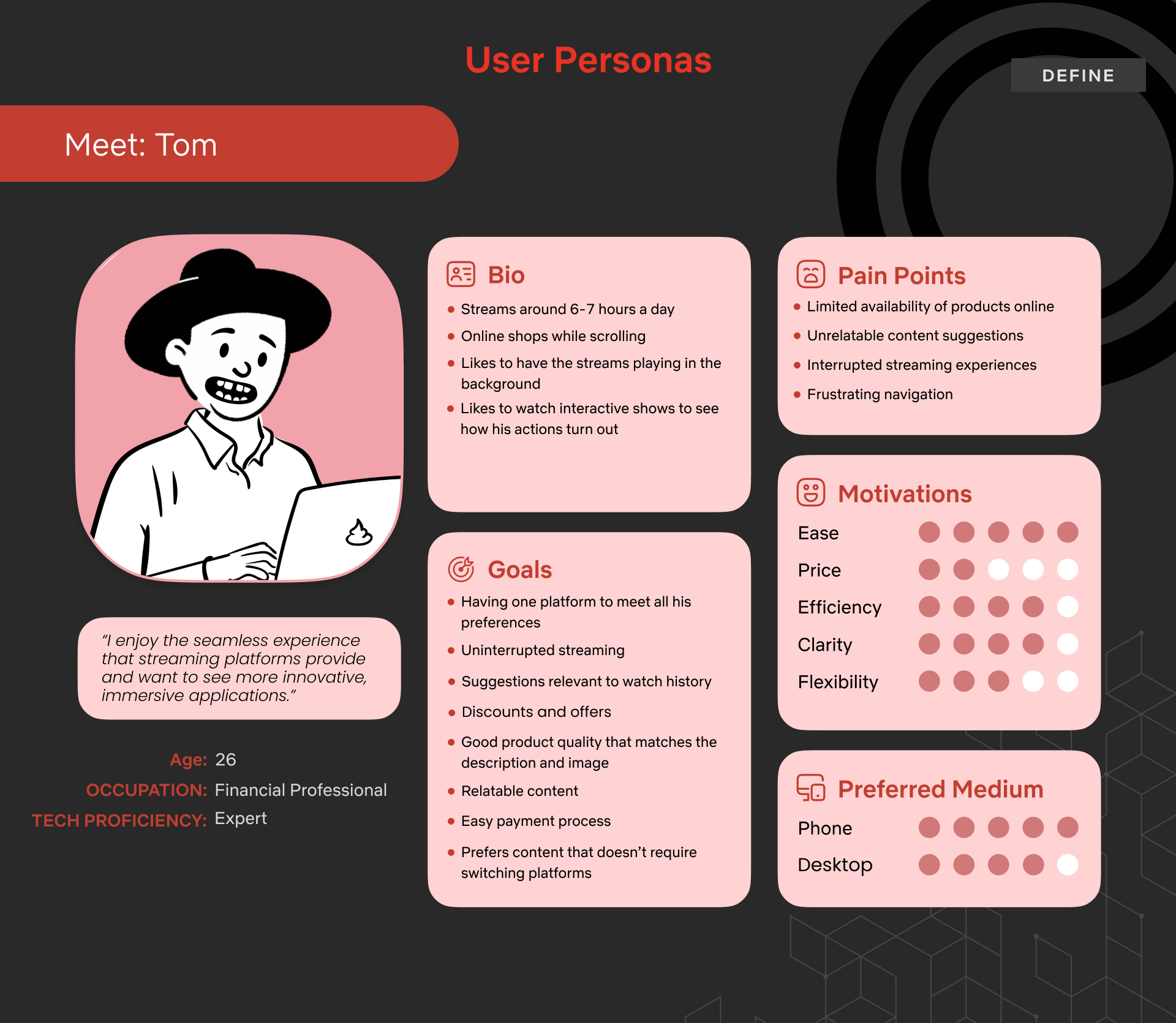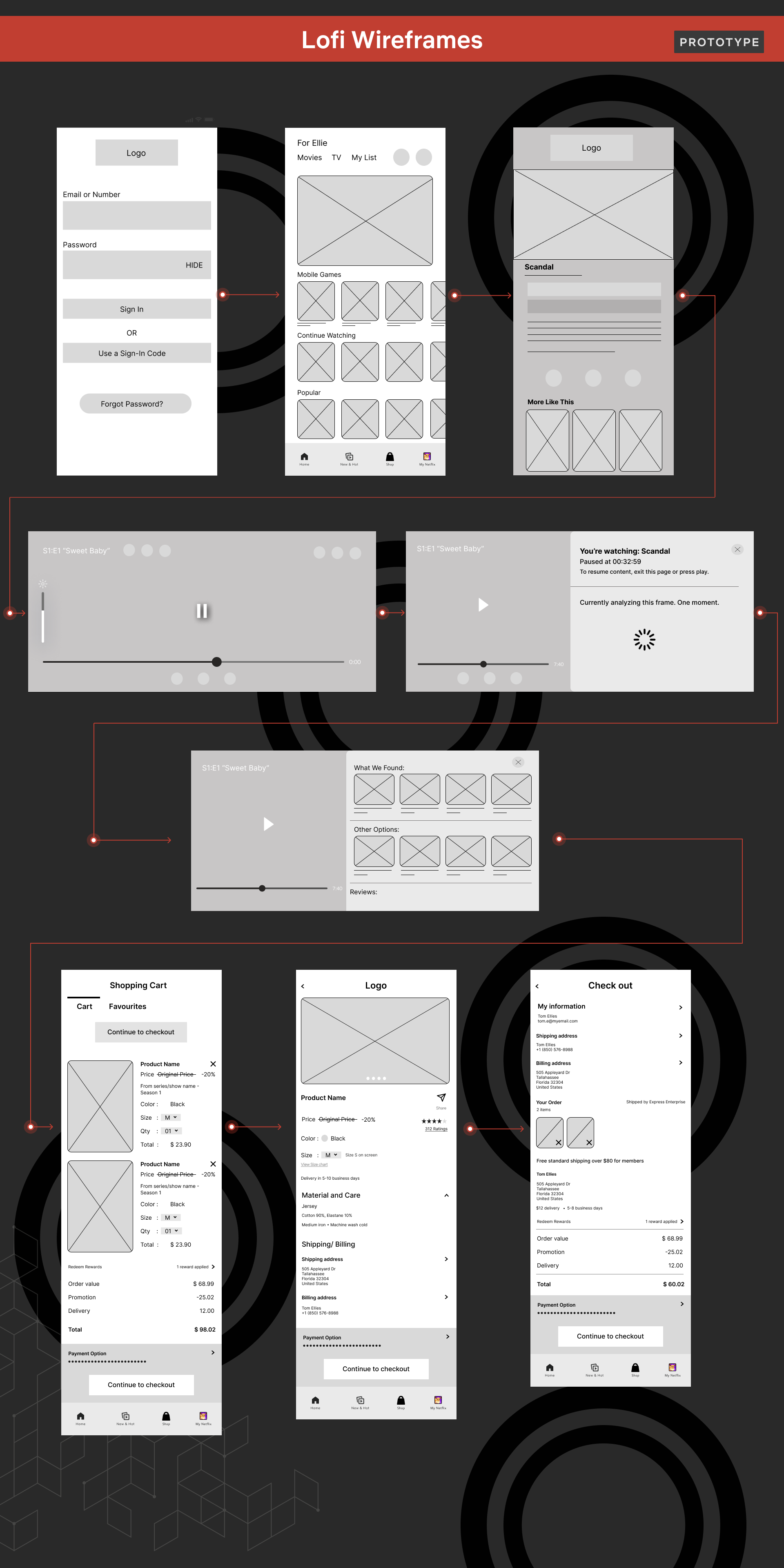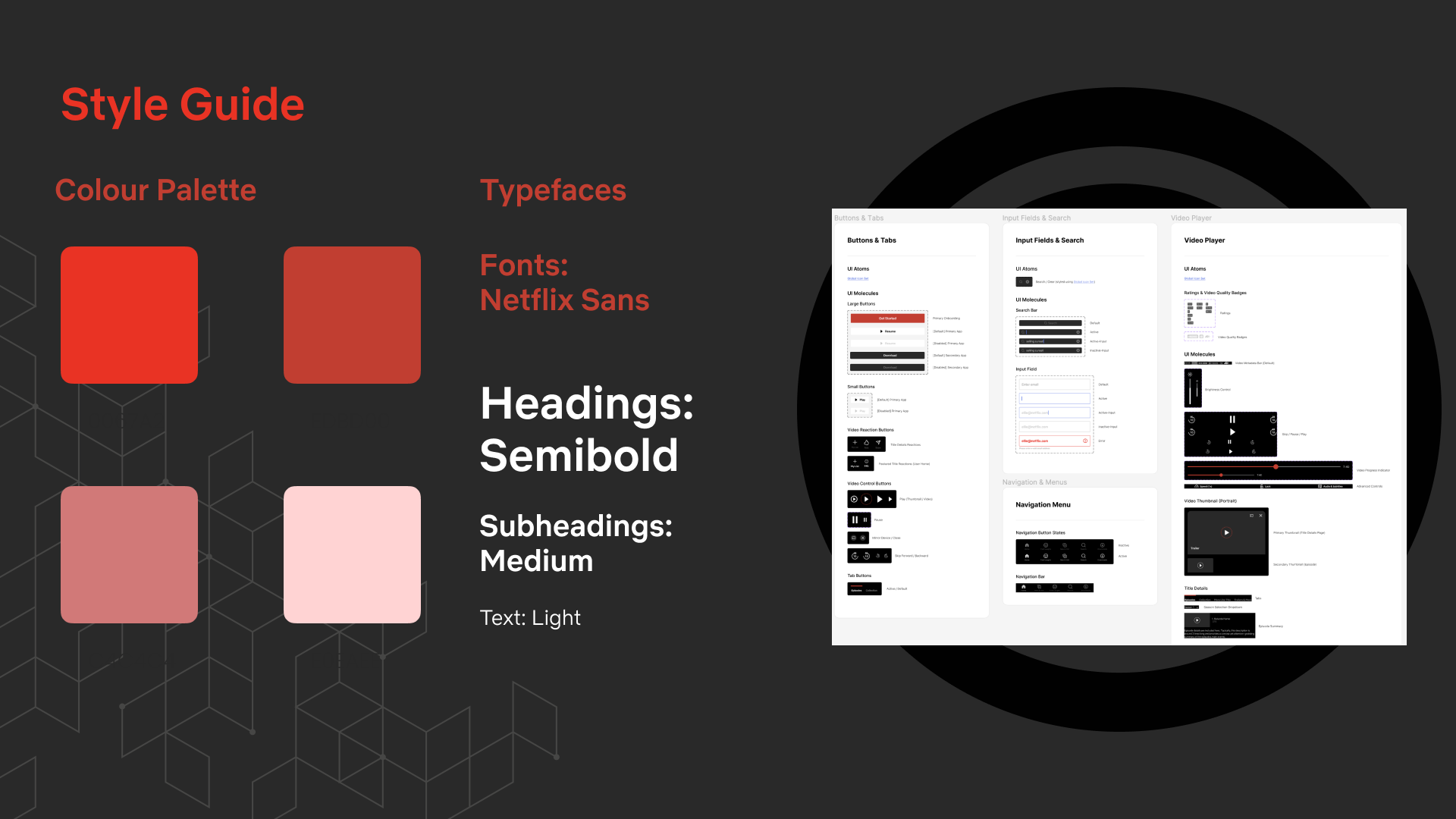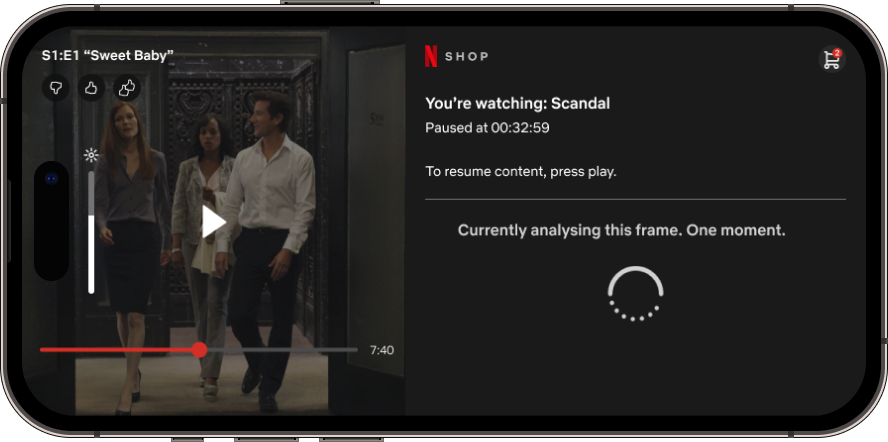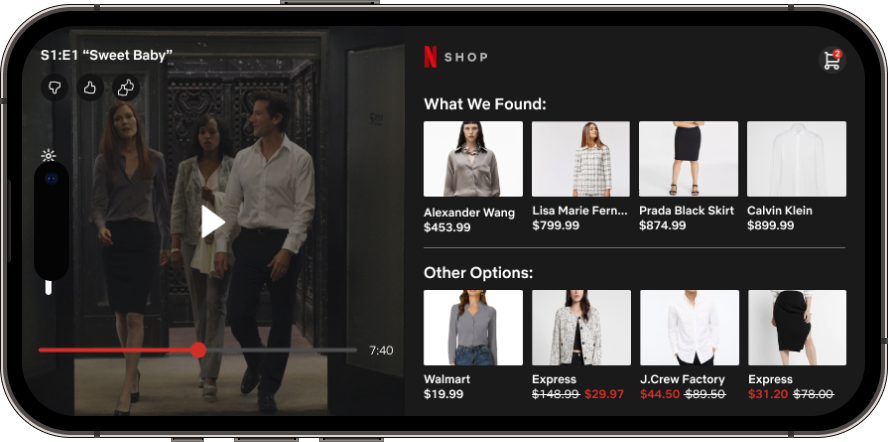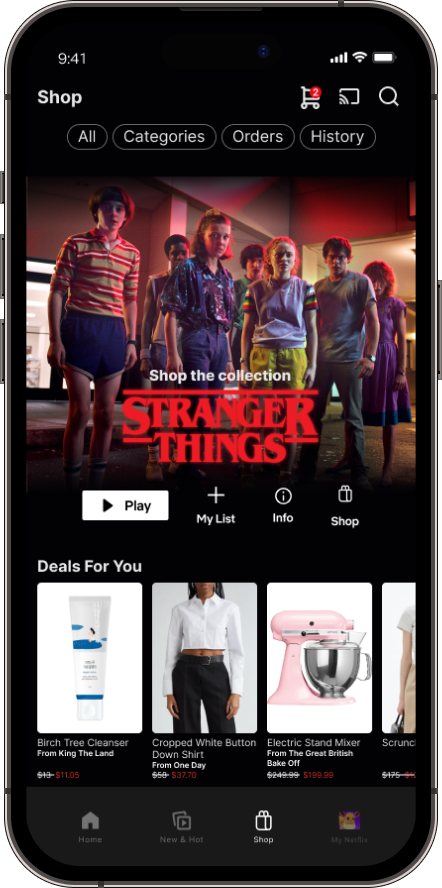Bridging the gap between entertainment and e-commerce.
Netflix Shop
Project Background
Prompt: Design a user experience that seamlessly integrates immersive storytelling elements and e-commerce functionalities within a video streaming platform (Netflix, Amazon, etc.) where users can seamlessly transition from enjoying their favorite shows to discovering and purchasing products featured in scenes.
Solution: Created an integrated Netflix Shop feature to enable viewers to discover and purchase products seen in shows and movies directly through the platform, thus enhancing user engagement and opening new revenue streams for the streaming company.
Duration: 6 weeks.
My Role: I worked as a Product Designer on a 4 person team for this project from IterateUX. Here, I focused on various different aspects of the project from the define phase to the testing phase. These include, but are not limited to, user interviews, the user journey map, secondary research, low fidelity + high fidelity wireframes and mockups, prototyping, and usability testing.
Tools: Figma, Miro, Notion, Google Meet.
Partnering with IterateUX
The IterateUX Foundation is a global community-based organization that supports User Experience Designers at all levels through design challenges, online events, portfolio reviews, and more. Here, designers can learn from other designers all things UX related.
In March 2024, IterateUX launched a 6-week design challenge that I decided to volunteer for. During this process, I was able to be paired with 3 other designers, thus creating a team of 4, prior to the official start of the challenge. Our team consisted of: Madison, Vaibhavi, Lula, as well as myself.
The first week was designated for team introductions and the remaining 5 weeks were to be focused on working on the challenge as a team from the user research to the usability testing.
Selecting a Problem to Solve For
After getting to know each other during the first week, we had to put our heads together to select one design challenge prompt to execute out of the four provided. As a team, we selected the Entertainment Evolution prompt which focused on designing a user experience that seamlessly integrates immersive storytelling elements and e-commerce functionalities within a video streaming platform (Netflix, Amazon, etc.) where users can seamlessly transition from enjoying their favorite shows to discovering and purchasing products featured in scenes.
The Solution
For this design challenge, we expanded upon Netflix’s original design to incorporate an e-commerce feature within the video streaming platform. This e-commerce feature utilizes AI technology to scan the frame of a user’s currently watched content to identify products within the scene as well as provide users with product details such as reviews, prices, and like items before proceeding through to the checkout process.
We selected Netflix after researching it’s mission, vision, and values as well as taking note that by including this feature, we could broaden the organization’s portfolio.
Research and Explorations
In order to understand our users, we decided as a team to conduct both primary and secondary research. We conducted 30 minute user interviews with 7 partcipants in total. By asking open ended questions, we tried to understand user habits by analyzing there online shopping journey, preferred shopping methods, and user frustrations- so that we can alleviate any pain points and create seamless merge between video content and shopping.
After conducting these user interview sessions, we discovered the following commonalities:
Users love Netflix because it provides easy navigation and good user experience.
Most of our users use mobile devices when viewing content online and shopping online.
Users want to keep products in their cart or favorites so they do not need to go through the entire buying process all over again.
Users want an informative product review section that highlights product details.
Understanding Users and Existing Products
We also worked on a competitive analysis where 6 different social media and video streaming platforms were studied. Together we analyzed the 5 key points within the analysis: strengths, weaknesses, opportunities, threats, as well as any additional notes we found as insightful.
After taking the time to search the market for possible competitors, I also began working on secondary research to figure out what the level of importance video content had on e-commerce as well as a further look into user wants and needs. The following takeaways were discovered during this process:
93% of consumers said video is helpful when purchasing a product.
Our users want to be able to view reasonably price products.
Customers want a streamlined buying experience.
These were only a few insights that were taken note of that helped us empathize with our users. From this research, we were able to craft a user persona that best embodied user goals, motivations, and pain points.
Designing the Journey
At this point within the challenge, we worked towards defining what our users journey would look like while experiencing an e-commerce experience within a video-streaming platform such as Netflix. I was able to lead crafting the user journey where I focused the digital experience encompassing the discovery phase (finding the Netflix app on a mobile device) through the the loyalty phase (where users would continue utilizing Netflix as well as the shop feature).
We also took some time as a team to curate How Might We statements to help guide our sense of direction as we prepared to navigate through the ideate phase. While we came up with a multitude of different statements, we put our heads together to create one core HMW statement that would act as our North Star.
With our direction set, we began working on low-fidelity wireframes for the mobile screens of our design challenge. Here we were able to watch our ideas come together where we focused on providing users with a seamless digital experience by integrating a search feature that, when pressed, analyzed the video content watched while simultaneously pausing the video and generating product results of the items within the frame.
These search results displayed brand and pricing information on the items on the screen, reviews, as well as displayed affordable similar product options.
Designing the User Interface
In order to keep the branding on par with that of Netflix, we utilized a design system through Figma. This design system provided vital user interface elements such as the typefaces, style guide, and key buttons. The design system was also used with the high-fidelity wireframes and mockups.
Takeaways
Ensure the UX writing within the design is apart of one uniform English dialect. There are certain words typed in Canadian-English and others typed in American-English. This could have helped create a more cohesive and consistent experience across the project.
Input more time as a team into sketches.
Partner with our mentor more as a team.

